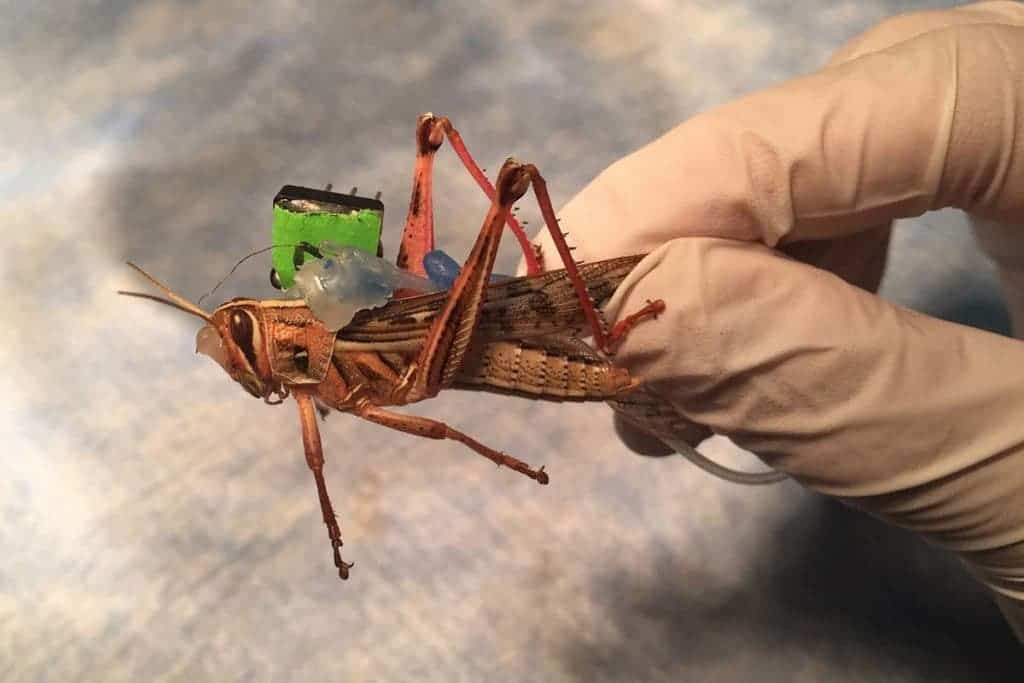New research at the Washington University in St. Louis, Missouri, is sniffing out explosives — with insects.

The bomb-sniffing American grasshoppers (Schistocerca americana) were created in the lab of Dr. Barani Raman, an Associate Professor at the Washington University’s Department of Biomedical Engineering. In order to tap into their tiny insect noses, the team implanted electrodes into the olfactory centers of their brains.
Cyborg grasshoppers
Insect antennae house olfactory (smell) receptors that the animals use to find food and detect threats. Data from these receptors is sent to an area of their brain known as the antennal lobe, which performs many of the same functions as our olfactory areas. Information from each of the grasshoppers’ antennae, the team explains, is fed to around 50,000 neurons in the antennal lobe. This, the researchers suspected, would make them much better at sniffing out explosives than any device we’ve yet designed.
In order to tap into their ability, the team implanted tiny electrodes into the insects’ antennal lobes and puffed vapors of different explosive materials. The team used dynamite (TNT) and its precursor 2,4-dinitrotoluene (DNT), along with hot air and benzaldehyde (the primary component in the oil of bitter almonds) as controls. The team measured the patterns of neural activation each of the compounds produced in the grasshoppers’ brains. With some practice, they eventually learned how to distinguish between the different vapors just by looking at the insects’ brain activity.
The last step was to fit grasshoppers with a sensor ‘backpack’ which would record and transmit their neural activity in real-time to a computer, where it would be interpreted.
All in all, these mechanized insects were able to successfully detect explosive compounds for up to seven hours after the electrodes were first implanted; after this time, however, the insects died. The whole procedure also immobilized the grasshoppers, so the team had to mount them on a wheeled, remote-controlled platform for testing.
The authors report that the insects’ sense of smell was sensitive enough that they successfully detected the areas with the highest concentration of explosives as they were being moved between various points at the testing location. Individual insects had an average explosive-finding accuracy of 60%, they add; used in groups of seven, they yielded accuracies of 80%. However, the team did not test them in settings where multiple odors were present at the same time.
The project was funded by the US Office of Naval Research and the researchers believe the grasshoppers could be used for homeland security purposes.
The paper “Explosive sensing with insect-based biorobots” has been published in the preprint server bioRxiv.


